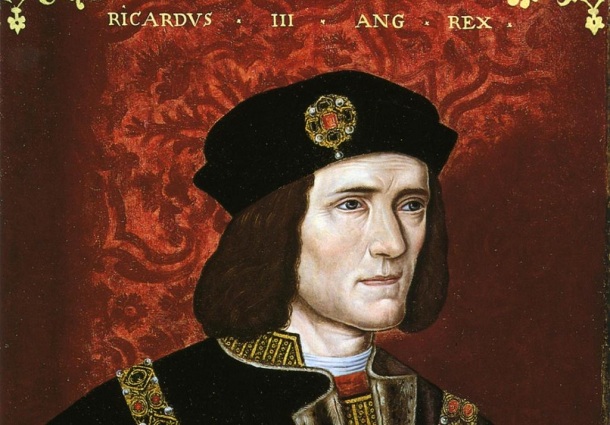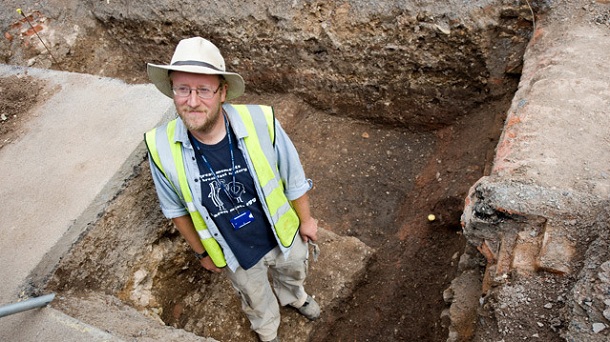Remains found beneath a council car park in Leicester have solved the 500-year-old mystery about the final resting place of King Richard III, archaeologists say. (Video)
British scientists have confirmed the human remains unearthed beneath a car park in the city of Leicester are those of mediaeval King Richard III.
King Richard III is a key figure in English histoy and ruled the country for two years, until his death at the Battle of Bosworth during the War of the Roses in 1485. The battle inspired a scene in Shakespeare’s play Richard III in which the defeated ruler cries: “A horse, a horse, my kingdom for a horse!”
Last September archaeologists unearthed a skeleton at a car park in the central English city of Leicester.
Researchers said they had concluded “beyond reasonable doubt” that the skeleton, which showed evidence of an abnormal lateral curvature of the spine, was the monarch.
There were cheers at the University of Leicester as the announcement was made.
Bone specialist Jo Appleby said a study of the bones provided “a highly convincing case for identification of Richard III”.
“The analysis of the skeleton proved that it was an adult male but was an unusually slender, almost feminine, build for a man. This is in keeping with historical sources which describe Richard as being of very slender build,” she said.
DNA samples from a Michael Ibsen, a Canadian-born furniture maker who is a direct descendant of Richard’s sister, Anne of York, provided further certainty.
Dr Turi King, the project geneticist, said: “There is a DNA match between the maternal DNA from the descendents of the family of Richard III and the skeletal remains we found at the Greyfriars dig. In short, the DNA evidence points to these being the remains of Richard III.”
The skeleton, with severe trauma to the skull and an arrow in the back, was unearthed on the first day of a three-week dig at the site of what is believed to have been the choir of Greyfriars Church.
Historical records show the long-lost church was the burial site of the monarch, following his brutal death at the battle of Bosworth Field in 1485.
The skeleton was found in good condition with its feet missing. Its hand were crossed over the front of the pelvis and there was no evidence of a coffin or shroud found with it.
The king’s remains will now be reinterred at Leicester Cathedral, the nearest consecrated ground, in keeping with archaeological practice.
Shakespeare portrayed Richard III as a hunchbacked tyrant but modern historians argue that the king was the victim of Tudor propaganda. His brief reign from 1483 saw liberal reforms, including the introduction of the right to bail and the lifting of restrictions on books and printing presses.
Richard III was the last Plantagenet monarch, a Yorkist defeated by Henry Tudor, who became Henry VII.
“It will be a whole new era for Richard III,” the Richard III Society’s Lynda Pidgeon said. “It’s certainly going to spark a lot more interest. Hopefully people will have a more open mind toward Richard.”
Statement Univercity of Leicester video
[media id=810 width=610 height=340]Alp Darıcı / NationalTurk
[adrotate banner=”33″]


